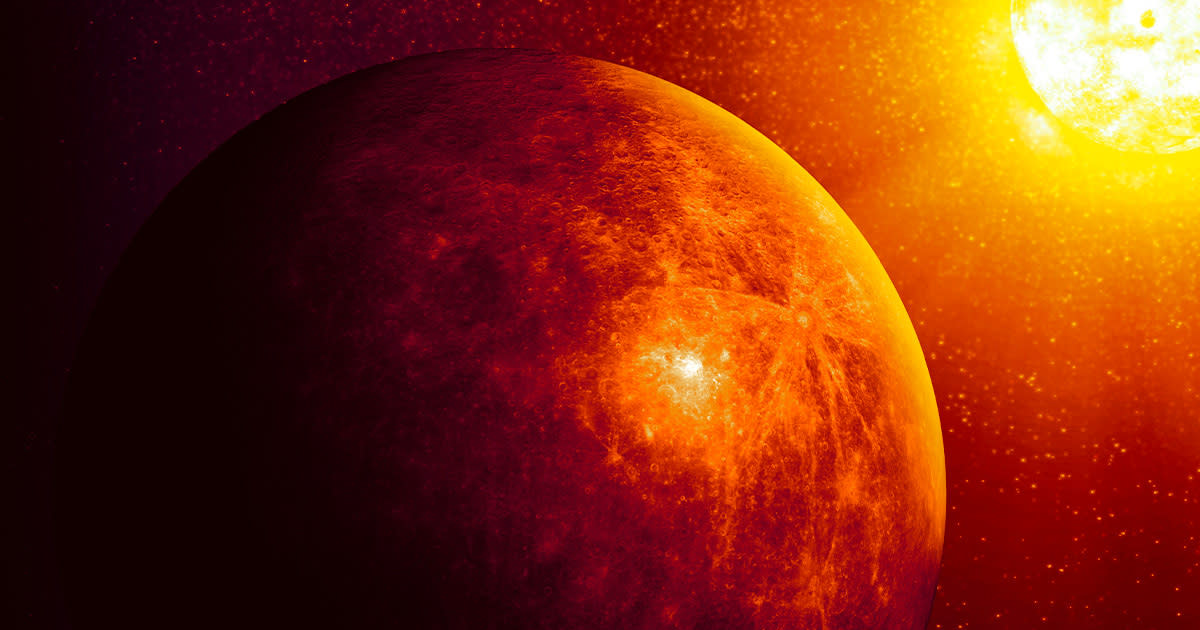Mercury Has an Eleven-Mile-Thick Layer of Diamonds, Scientists Find

Treasure Planet
An excess of carbon on the planet means that Mercury is starkly drab and gray on the surface. But new research suggests that underneath, the tiny world harbors a glittering interior fit to be the jewel in the crown of our Solar System.
As detailed in a new study published in the journal Nature Communications, researchers believe that Mercury has a layer of diamond up to 11 miles thick deep in the planet's rocky innards. It's a spectacular theory — one that not only dazzles the mind, but could help explain many of Mercury's puzzling attributes.
"Many years ago, I noticed that Mercury's extremely high carbon content might have significant implications," study coauthor Yanhao Lin from the Center for High Pressure Science and Technology Advanced Research in Beijing, said in a statement about the work. "It made me realize that something special probably happened within its interior."
Carbon Conundrum
In recent years, scientists have developed an explanation for why Mercury has such a dark surface. Using data from NASA's MESSENGER probe, which orbited the planet between 2011 and 2015, they discovered that the planet was covered in graphite — the same gray stuff used as lead in pencils.
How the graphite got there raises questions. Scientists believe it must've once been molten, welling up from a magma ocean somewhere deep within Mercury's mantle — a vast layer that lies between crust and core — before eventually cooling.
How deep that carbon source is, however, is less clear. And depending on a range of depth-related factors like pressure and temperature, other carbon materials could've formed, too — like diamond.
The possible discovery of sulfur in the planet's iron core in 2019 muddles things further: if present, the element could've diluted the magma ocean, affecting how it eventually crystallized.
Mr. Farenheit
To explore these possibilities, the researchers simulated the conditions of Mercury's interior using an anvil press. The machine applied pressure levels up to 7 gigapascals — that's seven times the pressure found at the bottom of the Mariana's Trench — on materials similar to what's found on the planet.
At the core-mantle boundary — where the lowermost part of the mantle abruptly transitions into the core — the researchers found that the pressures are actually closer to 5.575 gigapascals. With the introduction of sulfur dilution, they also found that the mantle material fully melted at a lower temperature than expected, at roughly 2,200 Kelvin.
These conditions, it turns out, are perfect for forming diamond. The researchers suggest that as these diamonds formed in the magma ocean, they gradually sunk down and deposited at the core-mantle boundary, forming this bejeweled layer around 300 miles beneath the surface.
According to Lin, this could also explain why Mercury's magnetic field is so powerful for its size: because diamond is so good at conducting heat, it could cause drastic temperature differences in the interior that churn the liquid in Mercury's core.
This, Lin adds, could also "be relevant to the understanding of other terrestrial planets" of similar sizes and composition, which might've also formed diamonds.
More on other planets: Scientists Spot Possible Signs of Life in Clouds of Venus

